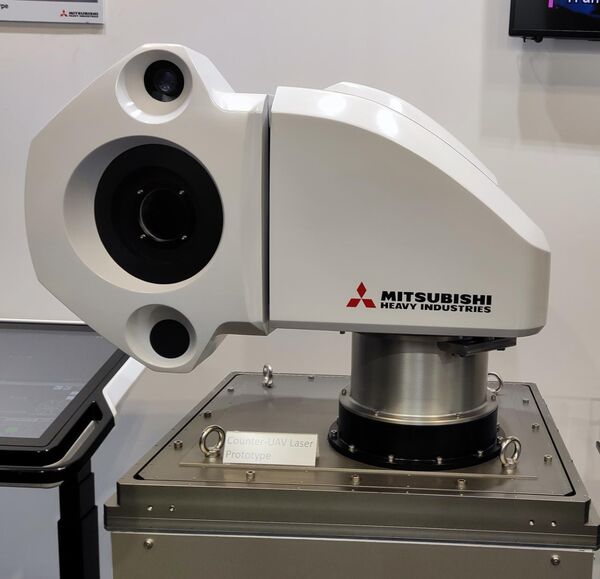
MHI will deliver at least one unit of its new laser system (pictured), developed to counter hostile UAVs, to the Japanese MoD in December. (Janes/Oishee Majumdar)
Mitsubishi Heavy Industries (MHI) has developed a new laser system to counter unmanned aerial vehicles (UAVs), and a manportable version of its cyber-security solution named Intersept.
Both the systems were displayed by MHI at the DSEI Japan 2023 show being held in Chiba from 15 to 17 March.
Company officials told Janes at the show that the laser system can destroy hostile UAVs within a range of 1.2 km. The company is expected to deliver at least one unit of the laser system to the Japanese Ministry of Defence (MoD) in December, the company officials added.
The company also unveiled a manportable version of Intersept, which can be used to detect targeted cyber attacks on control signals.
According to MHI, Intersept can detect and intercept unauthorised data by monitoring signals. Intersept can be applied without requiring modifications to target systems and monitors the systems without interruption or deterioration in performance.
The new manportable version has “more capabilities” than the earlier, stationary version of Intersept, a company official told Janes. For example, the newer version can also present information about all networked devices, and give analysis of alerts, including displaying a graph of sensor values related to alerts, the official said.
Janes was also told by the official that an undisclosed number of the stationary version of Intersept is currently being delivered to the Japan Maritime Self-Defense Force (JMSDF) to protect naval vessels from cyber-security attacks.
Looking to read the full article?
Gain unlimited access to Janes news and more...
